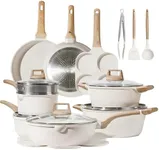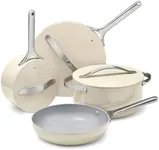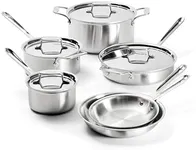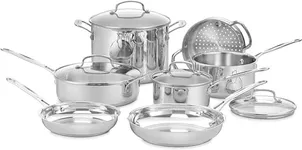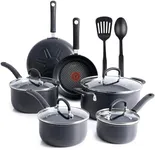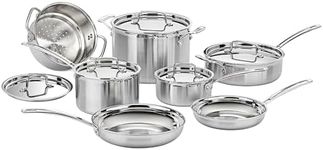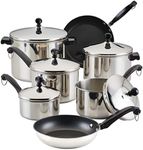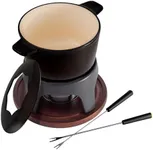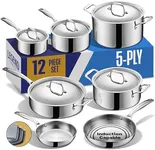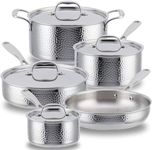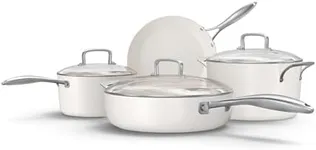Buying Guide for the Best Cookware Sets
Choosing the right cookware set can make cooking easier, more enjoyable, and even improve the quality of your meals. There are many types of cookware materials, sizes, and features, so it's important to think about what kind of cooking you do most often and what feels most comfortable for you. Look for sets that include the pieces you'll actually use, and remember that how the cookware feels in your hand, how easy it is to clean, and how it heats up are just as important as how it looks.MaterialThe material of cookware determines how well it heats up, how easy it is to clean, and how durable it is. Common materials include stainless steel, nonstick, cast iron, and aluminum. Stainless steel is known for its durability and even heating, but often benefits from an aluminum or copper core. Nonstick is easy to clean and great for delicate foods, but can wear out faster. Cast iron holds heat well and can last a lifetime, though it's heavier and requires seasoning. When choosing, think about what you cook most: stainless steel and cast iron are good for browning and searing, nonstick is ideal for eggs and pancakes, and aluminum heats up quickly if that's your priority.
Number of PiecesCookware sets can come with just a few pieces or more than a dozen. This usually includes a mix of pots, pans, and lids. More pieces mean more variety, but you may end up with items you rarely use. If you mostly cook for yourself or a small family, a set with just a few key pieces may be best, while larger sets suit those who cook a lot or for bigger groups. Make sure the set includes sizes and types you’ll actually use, like a skillet, saucepan, and a larger pot, rather than only focusing on the total piece count.
Oven-Safe TemperatureThis spec tells you how hot the cookware can get in the oven before it gets damaged. Some pots and pans can be safely used in the oven at high temperatures, while others are only safe up to a lower limit. If you like recipes that start on the stove and finish in the oven, or you bake things in your cookware, a higher oven-safe temperature will give you more flexibility. Check the limits for each set, and pick what matches your typical cooking style.
Compatibility with CooktopsThis tells you what types of stoves or ranges the cookware works with, such as gas, electric, glass, or induction. Not all cookware is suited for every type of stove. If you use an induction cooktop, you’ll need cookware that’s magnetic, like stainless steel or cast iron. For gas and electric stoves, most materials are compatible, but you might prefer flat-bottomed pans for smooth-top stoves. Make sure the set matches your current or future cooktop.
Handles and LidsHandles should be comfortable, sturdy, and ideally stay cool while cooking on the stove. Lids could be made of glass or metal; glass lets you check food without lifting the lid, while metal is lighter and often more oven-safe. Knobs and rivets should be built to last and easy to clean. If you have small hands or limited strength, try to pick handles that fit your grip, and check that lids are easy to place and remove.
Ease of CleaningSome cookware is dishwasher-safe, while others must be hand-washed to prevent damage. Nonstick surfaces are easier to clean but may wear out if scrubbed harshly or cleaned in the dishwasher. Stainless steel may need soaking for stubborn stains, and cast iron requires seasoning but develops a natural nonstick surface over time. If you value convenience, look for dishwasher-safe options or those that don't stain or discolor easily.
